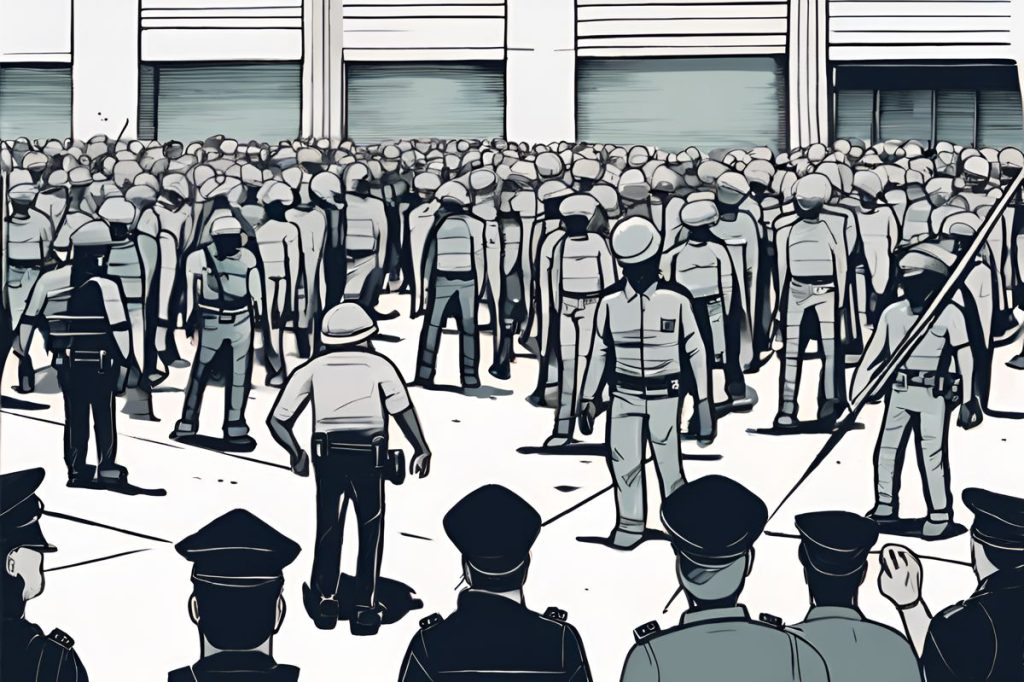Protests in Limassol began after Anisur Rahman’s death during a police raid, resulting in ten arrests. Controversy surrounds the raid tactics and legal decisions, sparking debates on migrant treatment and law enforcement accountability.
What led to the protests in Limassol and what were the consequences?
Protests in Limassol erupted after 24-year-old Bangladeshi Anisur Rahman died falling from a balcony during a police raid. The incident led to the arrest of ten individuals during the demonstrations. Controversy arose over the police’s raid tactics and the subsequent legal proceedings, raising issues about migrant treatment and law enforcement accountability.
Limassol has been enveloped in a wave of protests following a tragic incident that led to the untimely death of 24-year-old Bangladeshi national Anisur Rahman. In the aftermath of a contentious clash with law enforcement, a group of ten individuals found themselves behind bars.
The demonstration spiraled into chaos, culminating in the detention of six men and four women. They were taken before a district court the following day, where the police pushed for their remand. Despite the objections, the court declined, stating that there was no necessity for such actions, although they acknowledged that there was “reasonable suspicion” of offence.
The Catalyst of the Unrest
The protests erupted over the circumstances surrounding Rahman’s death, which occurred after a police raid on his apartment. In an attempt to evade the authorities, who were searching for illegal immigrants, he leapt from his fifth-floor balcony, falling to his death. The protestors allege that the police’s aggressive entry indirectly led to the fatal outcome and have been vociferous in their demands for a thorough investigation into what they refer to as the “murder of Rahman.”
Non-governmental organization Kisa has been at the forefront of challenging the police narrative. They claim to have testimony that contradicts the official version of events, indicating that the officers forcefully entered the residence without consent.
The Legal and Ethical Questions Raised
The incident has shone a spotlight on the protocols governing police raids. The police spokesman, Christos Andreou, has likened the procedure to a census check, implying no warrant was necessary for entry. This stance has sparked debate about the balance between law enforcement prerogatives and individual rights to privacy.
Kisa’s chairman, Doros Polykarpou, has reported that their complaint has been filed with the independent authority responsible for overseeing police conduct. They are seeking clarity and justice in a situation that has raised profound questions about the treatment of migrants and the accountability of law enforcement.
Echoes of Wider Concerns
This incident does not exist in isolation. It reflects broader issues of how law enforcement interacts with vulnerable communities, especially migrants. The outcry and subsequent arrests also underscore the tensions between public demonstrations and police responses to them.
As the legal process unfolds, many eyes will be on how the authorities handle the delicate interplay of maintaining public order, upholding justice, and preserving the right to peaceful protest. The community awaits answers and action, hoping that such a tragedy does not occur again.
What led to the protests in Limassol and what were the consequences?
Protests in Limassol erupted after 24-year-old Bangladeshi Anisur Rahman died falling from a balcony during a police raid. The incident led to the arrest of ten individuals during the demonstrations. Controversy arose over the police’s raid tactics and the subsequent legal proceedings, raising issues about migrant treatment and law enforcement accountability.
What were the circumstances surrounding Anisur Rahman’s death during the police raid?
Anisur Rahman’s death occurred when he fell from his fifth-floor balcony while attempting to evade the police during a raid on his apartment. The protestors allege that the police’s aggressive entry indirectly led to his fatal outcome, leading to demands for a thorough investigation into what they refer to as the “murder of Rahman.”
How has the incident in Limassol raised legal and ethical questions?
The incident has raised questions about the protocols governing police raids, with the police spokesman stating that no warrant was necessary for entry during a census check. This has sparked debate about the balance between law enforcement prerogatives and individual rights to privacy, as well as the treatment of migrants and the accountability of law enforcement.
What broader issues does the Limassol incident reflect in terms of law enforcement and community relations?
The incident in Limassol reflects broader issues of how law enforcement interacts with vulnerable communities, particularly migrants. It also underscores tensions between public demonstrations and police responses, highlighting the delicate balance between maintaining public order, upholding justice, and preserving the right to peaceful protest.

